![]() For several years now, the Raspberry Pi Foundation has been marketing 7-inch screens into which you can install a Raspberry Pi (sold separately) to create an all-in-one system. At Yoctopuce, we even have several that we use every day to monitor various experiments. But when we stumbled across SeeedStudio's reTerminal, we were keen to test it out to see if it could be used as an alternative.
For several years now, the Raspberry Pi Foundation has been marketing 7-inch screens into which you can install a Raspberry Pi (sold separately) to create an all-in-one system. At Yoctopuce, we even have several that we use every day to monitor various experiments. But when we stumbled across SeeedStudio's reTerminal, we were keen to test it out to see if it could be used as an alternative.
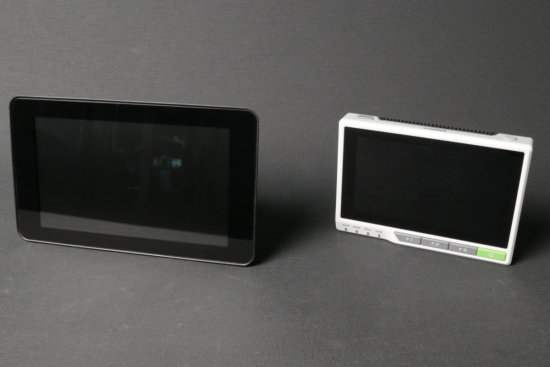
Raspberry Pi screen on the left, Seeed Studio's reTerminal screen on the right
General appearance
The reTerminal screen takes the form of a small 140x95x21mm pad. Like the RaspBerry Pi screen, it's a complete computer system. In fact, it's based on a RaspBerry Pi CM4 board that's included.
It has a 5-inch diagonal touch screen (1280x720 pixels). It has two USB A ports, an RJ45 network socket, a micro-HDMI connector for an external display, a USB-C connector for power, and two easily accessible expansion ports. There are mounting points on four of the six sides, and that's rare enough to mention it.
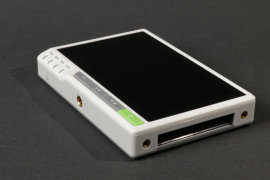

No shortage of mounting points
At first glance, the Seeed Studio screen inspires a feeling of solidity and professionalism, unlike the Raspberry Pi screen, which has always given us the impression that it's intended for small-scale tinkerers.
First-time use
To be honest, our enthusiasm was quickly dampened. The display is supposed to come with a ready-to-use operating system. After plugging in a power supply, the device turned on, but the screen remained hopelessly black. Reinstalling the OS as recommended by Seeed Studio in such cases made no difference. But we eventually noticed that if we plugged in an external display, both screens would work. After a little fiddling with the screen preference settings (Main Menu / Preferences / Screen Configuration), everything was back to normal. We suspect that the system was delivered to us with an invalid screen configuration, and that launching the screen configuration application put things right. We thought that we had solved the problem, but...
After a simple system update with standard "apt update" and "apt upgrade", the reTerminal screen stopped working again. This time, we had to reinstall the drivers as explained on this Seeed Studio wiki page for the screen to come back on. Apparently, we're not the only ones to have had such a bad first experience with the reTerminal.
Once it's up and running, the mini touchscreen is cute as can be, but because of the 1280*720 resolution on a 5-inch diagonal, you'll literally need magic fingers to click accurately through the menus. Bring a spare mouse if you don't want to go crazy.

Magic fingers are not included in the box
USB reliability
As the reTerminal is based on a CM4 module, we expected it to have the same problems as the Raspberry Pi 4, namely a slightly shaky USB stack. A bug that Raspberry Pi has never fully corrected. However, we did some quick testing, and the machine passed our stress tests designed to highlight the RPI4's problem without a hitch.
Yocto-Visualization
At Yoctopuce, the main application for this type of machine is to run Yocto-Visualization. Here too, we struggled a bit. If we use the 32bit OS recommended by Seeed Studio, after installing the latest versions of Mono and Yocto-Visualization, Mono crashes with an internal error when we try to launch Yocto-Visualization.
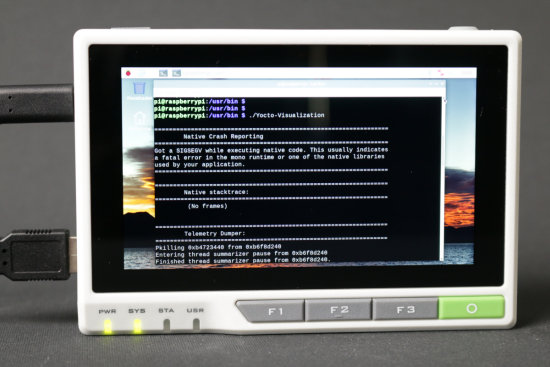
ReTermin + OS 32bits + Yocto-Visualization = crash
To be on the safe side, we did the same thing by installing the 64bit version of the same OS, and it works.
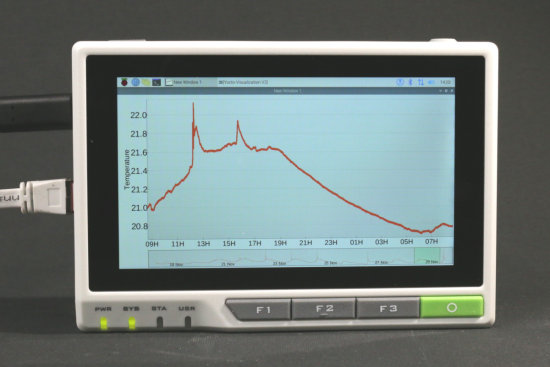
ReTermin + OS 64bits + Yocto-Visualization
Knowing that the OS images offered by Seeed Studio are only slightly modified versions of the Raspberry Pi OS offered by Raspberry Pi, we tried installing the original image, but it doesn't even boot.
Extension possibilities
Seeed Studio also sells an extension module under the E10-1 reference, which offers, among other things:
- A PoE power supply
- An embedded UPS
- Additional interfaces (RS-485, RS-232, CAN bus)
- A port for an M.2 B-format SSD.
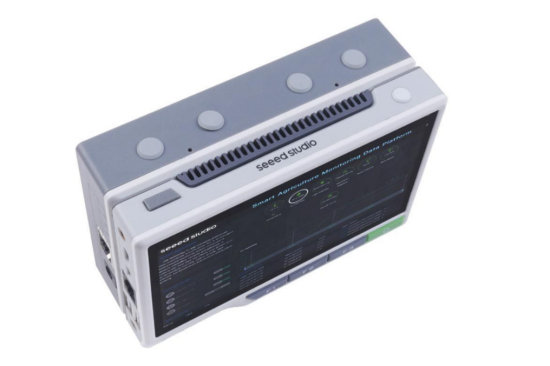
The screen with its extension module (image: Seeed Studio)
We weren't able to test this extension as we didn't receive it in time for this post. But it will probably be very useful for building systems that are easy to take into the field.
Conclusion
Sold for around $200, Seeed Studio's reTerminal screen is an interesting machine that could be useful for building small, easy-to-transport systems. But it comes with software that can be greatly improved. The screen driver has a major problem that has clearly not yet been resolved, despite the fact that this machine has been on the market for over two years. It's not right that it shouldn't work properly straight out of the box, forcing users to search the Internet for solutions.
Note that the reTerminal has recently been joined by a big brother, the reTerminal DM, with a much larger diagonal. However, it's not certain that we'll have the courage to test it.


